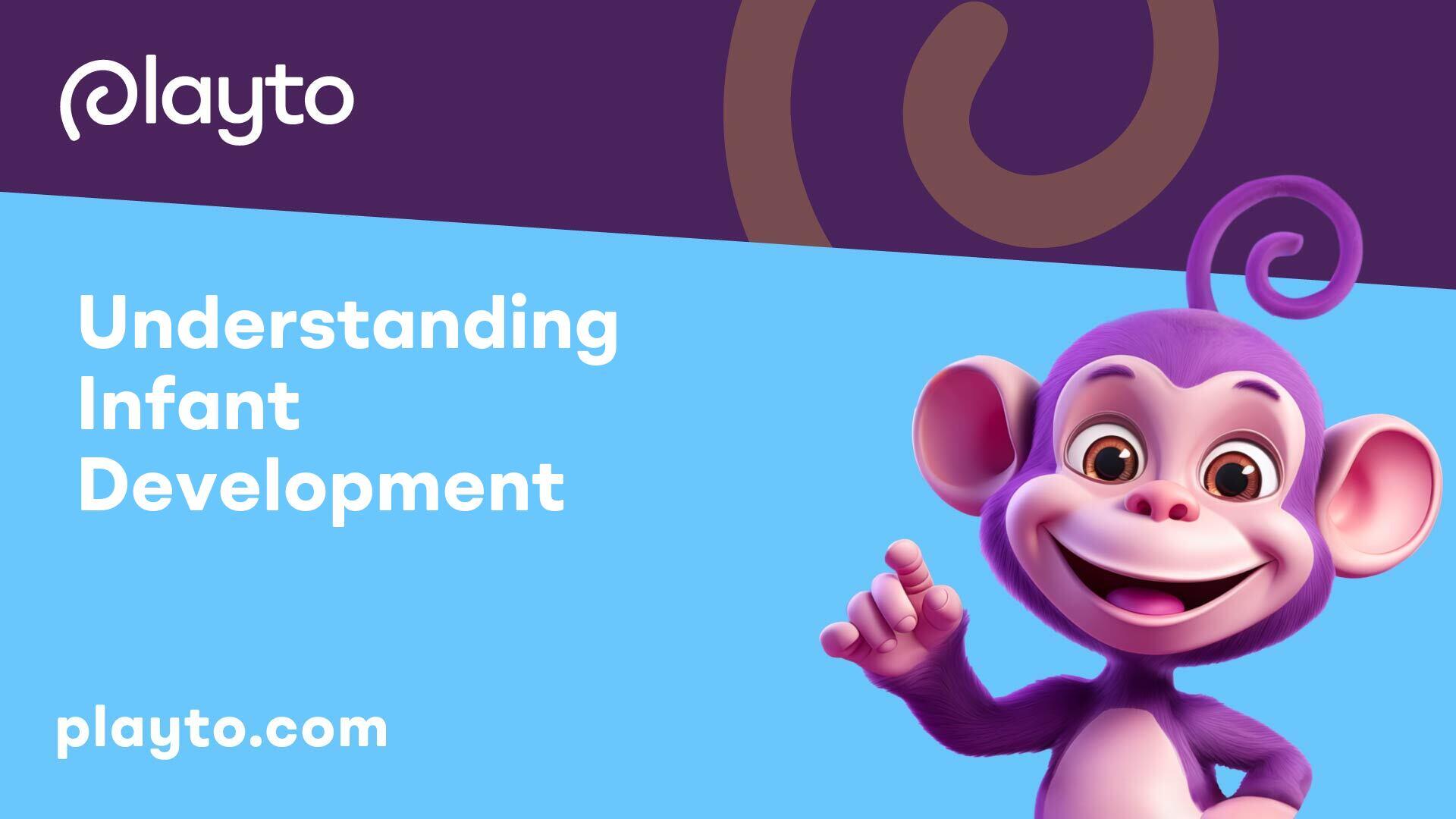
Understanding Infant Development
As infants grow, their development progresses through various stages marked by key milestones. Understanding how infants play and learn at different ages is essential for caregivers. Here, we delve into the progression of developmental activities from 2 months to 1 year, aimed at nurturing infants' growth and cognitive abilities.
Play and Learning
Play serves as a vital component in infant development, allowing them to explore their surroundings, develop essential skills, and form bonds with caregivers. It provides infants with the opportunity to engage their senses, enhance motor skills, and foster cognitive abilities [1].
Developmental Activities for 2-Month-Olds
At 2 months old, infants benefit from activities that stimulate their senses and facilitate interaction. Simple activities such as interacting with songs and taps to develop listening skills, making eye contact for language learning, and encouraging reaching for objects to enhance fine motor skills are beneficial for their early development [1].
Activities for 4-Month-Olds
As infants reach 4 months of age, engaging in activities that focus on sensory exploration and language development is key. Reading together, exploring different textures, and introducing cause and effect concepts through interactive play can aid in bonding, sensory enhancement, vocabulary expansion, and comprehension skills.
Engaging 6-Month-Olds
At 6 months old, infants start to explore their environment more actively. Activities that promote gross motor skill development, such as encouraging rolling over, providing exposure to new sights and sounds during outdoor walks, and engaging in games that strengthen core muscles, contribute to their physical and cognitive growth.
Learning Opportunities for 1-Year-Olds
By the age of 1, infants demonstrate increased curiosity and cognitive abilities. Engaging in activities like hide and seek to grasp object permanence, identifying objects when pointed to for vocabulary enrichment, and exploring water-filled bottles for visual skill enhancement are beneficial for their cognitive and motor skill development [1].
By incorporating age-appropriate activities into daily interactions, caregivers can support infants' developmental journey, providing them with the necessary stimuli for optimal growth and learning.

Understanding Infant Crying
When it comes to understanding infant crying, it's essential for caregivers to recognize the different patterns and know how to respond effectively. From normal crying to dealing with colic, providing adequate stimulation, and knowing when to seek medical help, being knowledgeable in this area is crucial for infant care.
Normal Crying Patterns
Crying is a natural way for infants to communicate their needs and feelings. It's normal for a baby to cry for about 2-3 hours a day during the first 6 weeks of life. During the initial 3 months, infants tend to cry more frequently than any other time. Understanding and responding to these cues play a significant role in nurturing a strong caregiver-child bond.
Dealing with Colic
Colic is a condition where babies cry intensely and frequently, often without any clear reason. It typically starts when a baby is around 2-5 weeks old and can last until the baby reaches 3-4 months of age. If a baby cries persistently for 3 or more hours a day, 3 or more days a week, for at least 3 weeks, they may be experiencing colic. Effective soothing techniques and comfort measures can help alleviate colic symptoms and provide relief for both the baby and the caregiver.
Providing Adequate Stimulation
Infants thrive on interaction and sensory stimulation. For 2-month-olds, activities like interacting with songs and taps can aid in developing listening skills, making eye contact and chit-chatting can help in learning language and conversation skills, and encouraging the baby to reach for objects supports fine motor skills development. Creating a stimulating and engaging environment can promote healthy cognitive and emotional development in infants.
Seeking Medical Help
While crying is a normal part of infant behavior, persistent or unusual crying patterns should never be ignored. If a baby's crying seems excessive, unexplained, or is accompanied by other concerning symptoms, it's essential to seek medical advice from a healthcare provider. Prompt evaluation and intervention can help address any underlying issues and ensure the baby's well-being.
Understanding the reasons behind infant crying, knowing how to differentiate between normal patterns and potential concerns, and being equipped with strategies to respond effectively are vital components of infant care. By being attentive to infants' cues, providing comfort and stimulation, and seeking help when needed, caregivers can create a supportive and nurturing environment for the little ones in their care.

Establishing Healthy Sleep Patterns
When it comes to infant care, establishing healthy sleep patterns is crucial for both the baby's well-being and the sanity of the caregivers. From setting a newborn sleep schedule to creating a bedtime routine, here are essential tips to ensure your infant gets the rest they need.
Newborn Sleep Schedule
For newborns, sleep is essential for growth and development. Newborns typically sleep between 14 and 17 hours over a 24-hour period, with sleep cycles lasting two to three hours initially. Gradually, these stretches extend to three to four hours as the baby grows. It is imperative to consult with your pediatrician regarding the appropriate timing to allow your baby to sleep for longer durations to support their development.
Sleep Training Tips
Baby sleep training is a process that should begin after the baby is at least 4 to 6 months old, and readiness for sleep training varies from child to child. Your pediatrician will advise you on when your baby is physically and developmentally ready for this process. It is essential to be patient and consistent during the sleep training period to help your infant develop healthy sleep habits.
Sleep Duration Guidelines
Establishing a basic newborn sleep schedule between 3 and 6 months can help anticipate your baby's natural sleepy times. Newborns require varying sleep durations depending on their age, and maintaining a routine can aid in easing the transition from daytime to bedtime. A consistent sleep schedule with bedtime and naptime routines helps teach babies to fall asleep on their own and sleep through the night.
Creating a Sleep Routine
A structured sleep routine can provide predictability and comfort for infants, helping them understand the difference between daytime naps and nighttime sleep. Consistency in bedtime and naptime routines signals to the baby that it is time to rest. It is crucial to consult a doctor if you have any concerns regarding your baby's sleep schedule or issues. Seeking help from a healthcare professional can assist in addressing various sleep problems effectively [3].
By following these tips for establishing healthy sleep patterns, you can help your infant develop good sleeping habits that will benefit their overall health and well-being. Remember, every baby is unique, so it's essential to be patient and flexible as you navigate the journey of infant sleep.

Infant Feeding Guidelines
When it comes to caring for infants, proper feeding is a critical aspect that influences their growth and development. This section covers essential guidelines for feeding newborns, transitioning to solids, bottle feeding recommendations, and nurturing healthy eating habits.
Newborn Feeding Schedule
Newborns rely entirely on breast milk or formula for their nutritional needs. Understanding the feeding schedule for newborns is crucial for their well-being. Here are some key guidelines:
Age Feeding Frequency Amount per Feeding
- 0-2 Weeks Old: Feed every 2-3 hours, 1-2 ounces per feeding.
- 2 Weeks Old: Feed every 2-3 hours, 2-3 ounces per feeding.
- 2-4 Weeks Old: Feed every 2-4 hours, 3-4 ounces per feeding.
As per Parents, formula-fed newborns should consume about 2.5 ounces of formula per pound of body weight daily.
Transitioning to Solids
Introducing solid foods to infants is a significant milestone in their development. The American Academy of Pediatrics (AAP) recommends introducing solids after 4 months of age. Here are some guidelines for transitioning to solids:
Age Feeding Frequency Amount per Feeding
- 1-3 Months Old: Feed every 3-4 hours, 4-5 ounces per feeding.
- 4 Months Old: Feed every 3-4 hours, 4-6 ounces per feeding.
Considerations for transitioning to solid foods should be made cautiously, ensuring the infant is developmentally ready and consulting with healthcare providers.
Bottle Feeding Recommendations
Bottle feeding is a common practice for many infants. Here are some recommendations for bottle feeding based on age:
Age Feeding Frequency Amount per Feeding
- 4 Months Old: Feed every 4 hours, 4-6 ounces per feeding.
- 6 Months Old: Feed every 4-5 hours, 6-8 ounces per feeding.
It's important to adjust feeding amounts based on the individual needs and cues of the infant. For detailed guidelines, refer to Parents.
Nurturing Healthy Eating Habits
As infants grow, establishing healthy eating habits is crucial for their overall development. Here are some recommendations for nurturing healthy eating habits:
- Infants aged 6-7 months, who are bottle-fed, may consume 24-32 fluid ounces of formula or breast milk per day, in addition to 1-2 meals of solids. Focus on viewing mealtimes as exploration and introduction to different tastes and textures, without emphasizing consumption.
- At 10-11 months old, infants should ideally consume 20-30 fluid ounces of breast milk or cow's milk per day, alongside 3 solid meals. It's important to adapt feeding schedules as infants progress in their chewing skills and tolerance to various food textures.
For more detailed feeding schedules and tips on nurturing healthy eating habits, visit Solid Starts. By following these infant feeding guidelines, caregivers can promote optimal nutrition and development in infants, laying a foundation for lifelong healthy eating habits.

Maintaining a Clean Environment
Ensuring a clean and safe environment is essential for the well-being of infants. Proper hygiene practices play a crucial role in protecting your baby from harmful germs and maintaining their health and safety. In this section, we will discuss key aspects of maintaining a clean environment for your little one, including cleaning infant toys, sanitizing baby equipment, using safe cleaning products, and practicing baby bath time hygiene.
Cleaning Infant Toys
It is recommended to clean baby toys at least once a week using a mild soap and water mixture to keep them germ-free. Toys that have been in contact with food or that babies frequently put in their mouths should be cleaned more frequently to prevent the spread of bacteria and viruses. Regular cleaning of toys helps to reduce the risk of infections and ensures a healthy play environment for your little one.
Sanitizing Baby Equipment
Baby bottles and feeding equipment should be washed with hot, soapy water after each use to remove any milk residues or food particles. Additionally, bottles should be sterilized regularly using methods like boiling, steam sterilizers, or microwave sterilization, especially for infants under three months. Proper sterilization of baby equipment helps to eliminate harmful bacteria and ensures that your baby's feeding items are safe and hygienic.
Using Safe Cleaning Products
It is crucial to choose safe household cleaners to avoid exposing your baby to harsh chemicals. Opting for baby-safe or natural cleaning products can help create a safe and clean living environment. Natural cleaners like vinegar and baking soda can serve as safe alternatives for maintaining a clean home environment without subjecting your baby to potentially harmful substances. Prioritizing the use of non-toxic cleaning products contributes to a healthier indoor environment for your infant.
Baby Bath Time Hygiene
Maintaining a clean and safe bath time environment is essential for your baby's hygiene. After each use, rinse and clean baby bath toys to prevent the buildup of mold or mildew. It is also important to wipe down the bathtub and surrounding surfaces regularly to ensure a hygienic bathing space. By incorporating proper cleaning practices into your baby's bath time routine, you can provide a clean and enjoyable experience for your little one while reducing the risk of infections.
By incorporating these practices into your daily routine, you can create a clean and safe environment that promotes the health and well-being of your infant. Regular cleaning and sanitation of toys and equipment, choosing safe cleaning products, and maintaining proper hygiene during bath time are essential steps in safeguarding your baby's health and ensuring a clean living environment.
Safety Measures at Home
When it comes to ensuring a safe environment for infants, implementing proper safety measures at home is essential. This includes maintaining cleanliness of baby items, childproofing for safety, safe diaper disposal, and managing laundry to safeguard the well-being of little ones.
Cleanliness and Baby Items
Regular cleaning of baby items is crucial to prevent the spread of germs and maintain a hygienic environment. It is recommended to clean baby toys at least once a week using a mild soap and water mixture to keep them germ-free. In addition, baby bottles and feeding equipment should be washed with hot, soapy water after each use and sterilized regularly to prevent bacterial contamination.
Baby Item Cleaning Frequency
- Baby Toys: Clean once a week.
- Baby Bottles: Clean after each use.
Childproofing for Safety
Childproofing your home is essential to prevent accidents and ensure a secure environment for infants as they explore and grow. This involves installing safety gates, securing furniture to walls, covering electrical outlets, and keeping hazardous items out of reach. Proper childproofing measures are key to creating a safe space where infants can play and learn without unnecessary risks.
Safe Diaper Disposal
Proper disposal of diapers is important not only for hygiene but also for environmental reasons. Ensure that diapers are disposed of in a sealed diaper pail or container to contain odors and prevent contamination. Consider using biodegradable or eco-friendly diaper disposal bags for a more sustainable approach.
Managing Laundry
When it comes to laundry for infants, it's important to use gentle detergents that are free of harsh chemicals and fragrances. Wash baby clothes, bedding, and towels separately using a mild detergent suitable for sensitive skin. Additionally, dry baby items in a clean and dust-free environment to prevent allergic reactions.
Maintaining a clean and safe environment for infants involves attention to detail and consistency in cleanliness practices. By incorporating these safety measures at home, caregivers can create a nurturing and protective space where infants can thrive and grow.
Soothing Techniques
In the realm of infant care, soothing techniques play a crucial role in ensuring the well-being and comfort of little ones. Daycare experts advocate for a variety of methods to calm infants, ranging from traditional practices to modern approaches. Let's explore some effective soothing techniques recommended by daycare professionals.
Swaddling for Comfort
One of the time-honored techniques for providing comfort to infants is swaddling. Swaddling involves wrapping babies snugly in a large, thin blanket to help them feel secure and comforted. It mimics the cozy environment of the womb, promoting a sense of safety and calmness. Parents or caregivers seeking guidance on the correct swaddling technique can consult a nurse or the child's doctor for a demonstration.
Calming Sound Effects
Introducing calming sound effects, such as white noise or a heartbeat recording, can have a soothing effect on infants. These sounds are reminiscent of the womb environment, creating a familiar and calming atmosphere for babies. Playing such sounds can help infants relax and drift off to sleep peacefully.
Addressing Food Sensitivities
For infants experiencing discomfort possibly related to food sensitivities, caregivers should be attentive to dietary considerations. In cases of breastfed babies, mothers may need to make adjustments to their diet, such as reducing milk products or caffeine intake. For bottle-fed infants, switching formula types might be beneficial. Addressing potential food sensitivities can alleviate discomfort and promote a more peaceful demeanor in infants.
Encouraging Healthy Sleep Habits
Establishing healthy sleep habits is paramount for the overall well-being of infants. Newborns typically sleep between 14 and 17 hours in a 24-hour period, gradually extending their sleep cycles over time. Consulting with a pediatrician to determine appropriate sleep schedules and durations is essential in fostering healthy sleep patterns. Recognizing signs of sleepiness, such as fussiness and eye rubbing, can help caregivers respond promptly and assist infants in transitioning to restful sleep.
Incorporating these soothing techniques into daily infant care routines can contribute significantly to the comfort, happiness, and development of babies. By creating a nurturing and tranquil environment, caregivers can help infants thrive and flourish during their formative stages.
Developmental Activities
When it comes to promoting the development of infants, engaging in age-appropriate activities plays a crucial role. From fostering parent-child interaction to enhancing specific skills at different stages of development, these activities are designed to support infants in various ways.
Parent-Child Interaction
One of the fundamental aspects of infant development is the bond formed between parents and their little ones. Engaging in activities that promote infant bonding not only strengthens the emotional connection but also facilitates social and cognitive development.
Tummy Time Importance
Tummy time is essential for infants as it helps strengthen their neck, shoulder, and trunk muscles. According to the American Academy of Pediatrics, newborns should engage in at least 15-30 minutes of tummy time per day starting at 7 weeks of age. This activity encourages babies to lift their heads, develop motor skills, and build the foundation for future milestones.
Stimulating 3-6 Month-Olds
Babies aged 3-6 months are entering a phase of exploration and discovery. To stimulate their developing senses and motor skills, activities like using a playmat to encourage movement, singing songs with motions, and allowing them to explore their hands or feet through interactive play can be highly beneficial. These activities promote sensory awareness, physical coordination, and cognitive development [6].
Engaging 6-12 Month-Olds
As infants progress to the 6-12 month age range, they are developing mobility, communication, and awareness. To support their growth during this stage, activities that encourage mobility, such as providing containers with objects to manipulate, exploring teething toys, and engaging in sensory play using food textures, can be stimulating. These interactions foster motor skills, sensory exploration, and language development in infants during this critical period.
Enhancing 12-18 Month-Olds' Skills
Toddlers aged 12-18 months are reaching important cognitive and fine motor development milestones. Activities focused on enhancing cognitive skills, such as stacking objects, exploring sensory play, and engaging in role-playing activities with toys or household items, can further boost their learning and comprehension abilities. These interactive experiences promote problem-solving, creativity, and fine motor coordination in toddlers as they continue to explore and learn about the world around them.
By incorporating these developmental activities into daily routines, caregivers and parents can support infants in reaching their developmental milestones and provide them with the necessary stimulation to thrive during this critical period of growth and learning.
References
[1]: https://www.unicef.org/parenting/child-care/21-learning-activities-babies-and-toddlers
[2]: https://kidshealth.org/en/parents/babies-cry.html
[3]: https://www.whattoexpect.com/first-year/baby-sleep-schedule.aspx
[4]: https://www.lifemaideasy.net/
